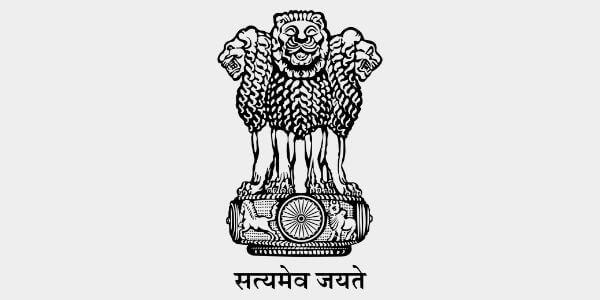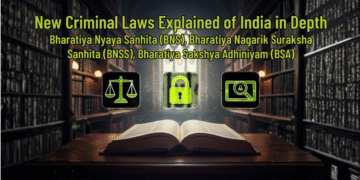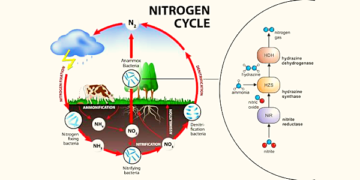The Companies Act 2013 is an Act of the Indian Parliament that governs the formation of companies in India. This article will discuss the Companies Act 2013 pdf, sections, and notes. We’ll also discuss the Features of the Indian Companies Act of 2013 and the Companies (Amendment) Bill of 2019.
What is the Companies Act 2013?
The Indian Parliament passed the Companies Act in 1956. It allowed for the formation of corporations by registration and established the roles of firms, their executive directors, and secretaries. In addition, it specifies the techniques for winding it.
The Indian Companies Act 1956 was changed by the Indian Government in 2013, and a new Act named the Indian Companies Act 2013 was added. As a result, the Indian Companies Act of 2013 has partially superseded the Companies Act of 1956. On August 29, 2013, India’s President gave his consent to the measure. It was later renamed the Act, and it went into effect on September 12, 2013.
The Indian Companies Act of 2013’s Highlights
- A Private Limited Company’s maximum number of members (shareholders) has been increased from 50 to 200.
- A one-person business.
- Corporate Social Responsibility is addressed in Section 135 of the Act.
- The Company Law Tribunal and the Company Law Appellate Tribunal are two tribunals that deal with business law.

Features of the Companies Act 2013
For the IAS test, you can read about the critical components of the Companies Act 2013 in this article.
Features of the Companies Act 2013
- The Companies Act of 2013 introduced a fresh idea of class action proceedings better to inform shareholders and other stakeholders about their rights.
- As a result, the National Company Law Tribunal was founded. It is an Indian quasi-judicial body that resolves business disputes. It was established to replace the Company Law Board.
- Rather than relying on official approval, it allows for self-regulation in terms of disclosures and openness.
- For companies with net assets of up to Rs.1 crore, official liquidators have adjudicatory powers.
- Merger and amalgamation procedures have been simplified and made speedier.
- This Act allows cross-border mergers (international companies combining with Indian companies and vice versa), but only with the Reserve Bank of India’s consent.
- The idea of a one-person business has been proposed. This is a novel sort of private corporation that can only have one shareholder and one director. A private corporation must have at least 2 directors and two stockholders, according to the 1956 Act.
- Documents must be kept in an electronic format.
- For public corporations, having independent directors has become a legal obligation.
- Women directors are required for a specific class of corporations.
- Every company must have at least one director who has lived in India for at least 182 days in the previous calendar year.
- The Act allows the articles of association to be entrenched (given extra-legal protection).
- The Act requires that board meetings be called with at least seven days’ notice.
- The functions of a Director are defined under this Act. The roles of ‘Key Managerial Personnel’ and ‘Promoter’ have also been specified.
Other Feature
- The entire procedure of company rehabilitation and liquidation in the event of a financial crisis has been made time-limited.
- Companies must organize CSR committees and develop CSR policies as a result of the Act. Certain firms have been required to make mandatory CSR disclosures.
- One director should be appointed to represent small shareholders in publicly traded corporations.
- There should be a rotation of audit firms and auditors for public organizations. The Act also prohibits auditors from providing the corporation with non-audit services. An auditor faces significant criminal and civil penalties if he or she fails to comply with the law.
- During an investigation, there is a provision for the search and seizure of papers without the need for a magistrate’s order.
- Accepting deposits from the general public is now subject to stricter regulations. The establishment of the National Financial Reporting Authority (NFRA) is planned. It is responsible for establishing and enforcing accounting and auditing standards and overseeing the work of auditors. (India is now eligible for participation in the International Forum of Independent Audit Regulators as a result of the NFRA’s notification) (IFIAR)
- If a critical manager or director is reasonably believed to have access to price-sensitive information, the Act prohibits them from purchasing calls and putting options on the company’s stock.
- The Act gives shareholders more authority by requiring shareholder approval for many important transactions.
- Accepting deposits from the general public is now subject to stricter regulations.
Before discussing the Companies Act of 2013, its sections, pdf, and notes. Details on the UPSC 2022 Exam Date – Prelims & Mains (IAS) – Calendar 2022 can be found at this link.

Sections in Companies Act 2013
The Indian Companies Act 2013 (Indian Companies Act 2013) contains fewer sections (470) than the Companies Act 1956 (Indian Companies Act 1956). (658). The new statute provides shareholders more control and places a premium on corporate governance. The Companies Act of 2013 has 470 sections organized into 29 chapters and seven schedules. However, there are currently just 438 sections left in the legislation. The ministry of corporate affairs notifies all provisions of the Companies Act. The Companies Act 1956 and the Companies Act 2013 are compared in this table.
| Details | 1956 | 2013 |
| Parts | 13 | – |
| Chapters | 26 | 29 |
| Sections | 658 | 470 |
| Schedules | 15 | 7 |
Don’t forget to look at the pdf as well. It is critical for your UPSC exam preparation. The Companies Act 2013 PDF can also be downloaded at the link given.
Companies (Amendment) Bill, 2019
The most recent modification to the Companies Act proposed the following changes.
- Companies will be required to hold a portion of their unspent funds in a separate account for CSR purposes.
- If this money is not spent within 3 years, it will be transferred to a fund established in Schedule VII of the Act. It’s possible that this is the Prime Minister’s Relief Fund.
- If a company does not do business or operate in accordance with the Company Law, the Registrar of Companies can take action to have its name removed from the Register of Companies.
- 16 of the Act’s minor offenses have been decriminalized (made civil defaults).
The Companies Act of 2013 has undergone significant revisions. The Act has been revised four times, the first in 2015 and the most recent in 2020.
1st Amendment to the Companies Act of 2015
Companies Act (Amendment 2nd) of 2017
Companies Act of 2019 (third Amendment)
Bill 2020, Companies (4th Amendment)

Conclusion
Finally, the article helps you by offering important information about the Indian Parliament, which regulates the establishment of firms in India. This article covered the Companies Act 2013 pdf, sections, and notes. It is one of the crucial subjects included in the IAS test study resources that can help you do well on the exam.

FAQ- Companies Act 2013
In India, there are many different forms of business entities. They are as follows:
A Private limited company
Unlimited company
Public limited company
Sole proprietorship
Partnership
Joint Hindu family business
Limited liability partnerships
Cooperatives
A private corporation with no share capital is known as an unlimited firm. However, the shareholder’s liability is unrestricted. That means the shareholders have a joint, multiple, and unlimited obligation to pay the firm’s debts if the company is liquidated. In contrast, in a limited corporation, shareholders have no direct duty to creditors and must rely solely on the firm’s and their own assets.
For example, suppose a Director or an individual other than a Director/firm/private company/body corporate receives an amount in excess of the company’s salary (in the case of directors) and anything in the form of remuneration for others. In that case, the Board must approve it by resolution.
A person who chairs a meeting is known as a chairman. A chairman is a person who is normally chosen or appointed to chair meetings of the Board of Directors/ Members of a corporation in the corporate world. The Managing Director is a company’s top director who is entrusted with significant management authority.
Editor’s Note | Companies Act 2013
In conclusion, we have included all relevant information on the Companies Act 2013 and the Companies (Amendment) Bill, 2019 in this post. The Companies Act of 2013 and its sections, pdf, and notes are also mentioned. This is a topic that will be covered in the UPSC test. As a result, we recommend that you make a list of all the important points that you can review during the exam. In addition, you should look over prior year’s papers to get a sense of the paper pattern and question types. There is a lot of competition for the IAS exam, and only those who put in a lot of effort will be able to pass. Best of luck with your examinations!







